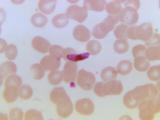Oct 7, 2010
Children's flu vaccine levels still low
The US Centers for Disease Control and Prevention (CDC) reported today that seasonal flu vaccination was up slightly last year, to 26%, among children aged 6 months to 18 years. Reporting in the Oct 8 issue of Morbidity and Mortality Weekly Report (MMWR), CDC researchers, studying data from eight immunization information system sentinel sites, said that the percentage of children receiving at least one dose climbed from 20.8% in 2008-09 to 26.3% in 2009-10, the first year for which the vaccine was recommended for all children older than 6 months. Increases varied by age-group, ranging from almost no increase among children younger than 2 to greater increases among older children. The increases were reported thus: age 2 to 4, 33.0% to 38.4%; 5 to 12, 19.0% to 27.1%; and 13 to 18, 10.9% to 15.3%. Full vaccination coverage (those under 9 may need two doses) was low during the 2009-10 season, ranging from 34.7% in children under 2 to 15.3% in children 13 to 18 years old. An accompanying editorial said, "The data in this report underscore the minimal increase in vaccination coverage among children aged 6-23 months from the 2008-09 season to the 2009-10 season, the continued low coverage among older children despite larger increases observed in these age groups, and the low full vaccination coverage among young children, leaving many unprotected against influenza."
Oct 8 MMWR report
Novartis aims for 'bank' of synthetic seed viruses for flu vaccines
Swiss pharmaceutical firm Novartis announced today a partnership with Synthetic Genomics Vaccines Inc. (SGVI) to apply "synthetic genomics" technologies to accelerate production of the influenza seed strains needed for vaccine manufacturing. The seed strain is the starter culture for growing viruses for vaccine. The 3-year agreement, supported by an award from the US Biomedical Advanced Research and Development Authority (BARDA), could lead to faster production of seasonal and pandemic flu vaccines, according to a company news release. The collaboration is designed to produce a "bank" of synthetically constructed seed viruses ready for vaccine production as soon as the World Health Organization (WHO) identifies the flu strain or strains. It could reduce vaccine production time by up to 2 months, according to Novartis. SGVI was founded by current CEO and genome pioneer Craig Venter.
Oct 7 Novartis news release
FDA promotes advances in regulatory science
The US Food and Drug Administration (FDA) yesterday released a report designed to improve public health by advancing regulatory science. The report defines regulatory science as "the science of developing new tools, standards, and approaches to assess the safety, efficacy, quality, and performance of FDA-regulated products" and says "it involves scientific tools and information-gathering and analytical systems to study data, people, health systems, and communities." Among the topics covered are protecting against emerging infectious disease (including pandemic flu) and bioterrorism, as well as protecting the food supply. In terms of addressing infectious disease and terrorism, the report says increasing investment in regulatory science can lead to new approaches to evaluate product efficacy, better rapid tests, fine-tuning of cell culture and in silico modeling of safety and efficacy, and new point-of-care diagnostics, among other advances. Improvements outlined in the area of food protection include more effective tools and strategies for sampling, testing, and analysis; better Salmonella tracking; improved response to foodborne illness; and better monitoring of antibiotic resistance in foodborne pathogens.
Oct 6 FDA report
ECDC says H1N1 flu may have diverted attention from other disease threats
In its 2009 Annual Threat Report, the European Centre for Disease Prevention and Control (ECDC) said the number of new (emerging) threats reported was down 28% from the previous year. It attributed the decrease to the H1N1 pandemic diverting attention and reporting away from other new threats. The ECDC reported that 192 threats were monitored in 2009, 174 (91%) of them new. Events are considered public health threats if they meet predetermined criteria; threats are documented and monitored through a dedicated database called the Threat Tracking Tool. In contrast to the decrease in new threats reported, the number of messages posted in 2009 through the ECDC's Early Warning and Response System increased fivefold compared with the previous 2 years, with 88% of them relating to influenza. Threats of note other than flu in 2009 included Salmonella, verotoxin-producing Escherichia coli, mumps, measles, legionellosis, West Nile virus, Q fever, and malaria. Foodborne and waterborne threats were at an all-time low, perhaps due to decreased reporting from health departments busy with the flu or possibly to increased hand washing.
ECDC 2009 Annual Threat Report
Dengue in India at 20-year high
India, currently hosting the Commonwealth Games in New Delhi, is experiencing a 20-year high in cases of dengue fever, with at least 50 people dead and 12,000 cases reported, according to an Agence France-Presse (AFP) article. WHO officials warn that 2.5 billion people worldwide are at risk for the mosquito-borne disease, 70% of them in Asia. They attribute the rising number of cases across Asia to higher temperatures, a growing population, and more international travel. Countries with the highest incidence so far this year are Indonesia with more than 80,000 cases, Thailand with about 58,000, and Sri Lanka with more than 27,000. The prevalence in the Indian population grew from 3.4% in 2006 to 9.1% in 2009, according to health ministry surveys. An Indian official blamed late preparation for the Commonwealth Games, which left puddles and rubble, ripe for mosquito breeding, for some of the increase in cases there.
Oct 7 AFP article
Polio spreads to northern Afghanistan
Afghanistan announced a case of polio in its northern Kunduz Province in August, almost a decade after the last case in the region, according to United Nations–based IRIN News. The case was in a 13-month-old boy. The country has confirmed 17 other polio cases this year, 15 in the south and 2 in the east. A WHO official said the virus from the latest case is closely linked with one currently circulating in Pakistan and was probably imported from there. Pakistan has seen at least 69 polio cases this year, according to IRIN. Neighboring Tajikistan has also seen a major outbreak of polio. "We are gravely concerned about the spread of polio virus from Tajikistan to Afghanistan," said Suraya Dalil, Afghanistan's health minister, on Oct 3 during the start of a 3-day nationwide polio vaccination campaign targeting 7.8 million children.
Oct 6 IRIN News report




















